Aizhai Bridge
Jishou, Hunan, China
1,102 feet high / 336 meters high
3,858 foot span / 1,176 meter span
2012
Aizhai is the world’s highest tunnel to tunnel bridge and the fourth suspension bridge in China to cross a valley so wide it seems to be connecting two mountain ranges. The first three were the Siduhe, Balinghe and Beipanjiang 2009 bridges. Of the world's 400 or so highest bridges, none has a main span as long as Aizhai with a tower to tower distance of 3,858 feet (1,176 mtrs). Located deep in the heart of China’s Hunan Province near the city of Jishou, the suspension bridge is the largest structure on the Jishou to Chadong expressway with a deck 1,102 feet (336 mtrs) above the DeHang Canyon.
The two tunnels on either side of the Aizhai bridge allowed the engineers to use the mountain top for the location of one of the towers, reducing its height to just 165 feet (50 mtrs) - unusually short for a bridge with a span nearly as long as the Golden Gate bridge at 3,858 feet (1176 mtrs). In addition to cost savings, the stubby support also allows the bridge to blend more naturally into its surroundings. The taller bridge tower is no less unique with side span cables that soar down the backside of a mountain, making first time visitors quizzical as to what exactly lies ahead. With most of the structure hidden from view, the bridge will come as a jaw-dropping surprise whether you enter the canyon from either tunnel. Due to a gap of approximately 328 feet (100 mtrs) between the last truss suspenders and the tops of the bridge towers, the engineers added some additional ground anchored suspenders to stabilize the two massive suspension cables and reduce any oscillations that could damage other components of the bridge. An overlook and visitors center will offer additional views of the broad valley.
Aizhai Bridge Elevation
Image by Rednet.cn
Image by Eric Sakowski / HighestBridges.com
Image by Eric Sakowski / HighestBridges.com
Image by Eric Sakowski / HighestBridges.com
The truss was nearly complete in mid-August 2011. Image by Eric Sakowski / HighestBridges.com
Image by Eric Sakowski / HighestBridges.com
The safety net gave the bridge a unique green glow during the construction phase. Image by Eric Sakowski / HighestBridges.com
Image by Eric Sakowski / HighestBridges.com
An early construction view from 2009 after the main cables were completed. Image by Eric Sakowski / HighestBridges.com
Image by Eric Sakowski / HighestBridges.com
Image by Eric Sakowski / HighestBridges.com
Image by Eric Sakowski / HighestBridges.com
Image by Eric Sakowski / HighestBridges.com
Public bridge day celebration in February, 2012. Image by jt.rednet.cn
Note the last set of cable suspenders on the left side are anchored into the ground. Image by jt.rednet.cn
The Grand Opening Celebration occurred on March 31, 2012.
Image by voc.com.cn
Image by cfp.cn.
A sweeper keeps the beams clean for opening day.
Image by Chinanews.com
Image by news.rednet.cn.
A group of paragliders buzzed across the span.
Thousands gathered along the old road that zig zags beneath the new span. Image by voc.com.cn.
Image by jssxww.cn.
Image by jssxww.cn.
A long temporary construction shed was built below the bridge to protect drivers from falling debris during construction. Image by Eric Sakowski / HighestBridges.com
Image by Eric Sakowski / HighestBridges.com
Image by Eric Sakowski / HighestBridges.com
Eric Sakowski / HighestBridges.com
Image by Eric Sakowski / HighestBridges.com
The small town of Aizhai is dwarfed by the bridge. Image by Eric Sakowski / HighestBridges.com
Image by Eric Sakowski / HighestBridges.com
Image by Eric Sakowski / HighestBridges.com
Image by Eric Sakowski / HighestBridges.com
Workers had already begun installation of the smaller truss stringer beams on top of the larger truss. Image by Eric Sakowski / HighestBridges.com
The Aizhai Bridge truss connection at the center span. By "locking" the main cables to the deck, the bridge deck steel expands and contracts evenly at the expansion joints located at either end of the truss near the towers.
Aizhai Bridge load test with dozens of gravel filled trucks.
A motorbike rider takes his first ride across the span.
Image by Eric Sakowski / HighestBridges.com
Image by Eric Sakowski / HighestBridges.com
The tunnel anchorage on the North side of Aizhai Bridge. Image by Eric Sakowski / HighestBridges.com
The south tower cliff is covered with bolts to ensure the ground remains stable. Image by Eric Sakowski / HighestBridges.com
Image by Eric Sakowski / HighestBridges.com
A measurement drawing of the deepest section of the valley.
A direct size comparison between the Aizhai and New River Gorge Bridges.
The Dehang Canyon road dead ends in 4 kilometers where a special minority village is located. As an invited guest you can see a spectacular show with music, colorful costumes, dragons, a fire walker and more! Image by Eric Sakowski / HighestBridges.com
The Dehang Canyon entrance gate. Image by Eric Sakowski / HighestBridges.com
The DeHang Canyon is an official Chinese National Park. Image by Eric Sakowski / HighestBridges.com
Image by Georges.
Image by Georges.
Image by Eric Sakowski / HighestBridges.com
The limestone rock formation known as the 3 sisters stand high above the gorge. Image by Eric Sakowski / HighestBridges.com
The town of Aizhai with the 3 sisters in the distance. Image by Eric Sakowski / HighestBridges.com
Looking like a scene from the movie Avatar, the deep canyon dwarfs the north tower in the upper left.
The view from the north side with the short tower shows the taller south tower halfway complete on the far side of the canyon. Image by www.smxxsy.com
An early Aizhai computer rendering. In the final design, the taller tower has a horizontal cross brace with more ordinary antenna-like tower tops. The tunnel was also changed and does not extend under the taller tower.
Several Aizhai bridge tower designs.
One of the cable anchorages located on the back side of the mountain range.
The wire bundles are connected to a deep underground concrete wall.
Aizhai valley wind test model.
Note how close the foliage is to the back span cables.
The tunnel entrances beneath the tall tower.
One of the cables sagged down into the gorge during the early process of setting up the catwalks. The Chinese workers quickly freed up the cable and hoisted it out of the valley.
You can view a video here of the preparation to use a small blimp to take the first pilot line across.http://bbs.rednet.cn/thread-22618784-1-1.html
The hanging cable reveals just how high up the rock face scaffolding is below the south tower.
The catwalks were in place by mid-2010.
The wires are always grouped into hexagon shaped bundles that fit together within the larger main cable like the pieces to a puzzle.
The main cables were completed in the fall of 2010.
A large model was created to show the unique process where the truss sections will be pulled and rolled along hanging cables with wheel bogies attached to them.
One of the massive bogies especially designed to pull the suspended truss sections out over the gorge.
A test section was set up for the traveling bogies. The temporary supports simulate the stringer intervals where the bogies will travel on cables that are connected to the ends of the stringers.
In the above view you can see the process where the suspended truss sections roll along horizontal cables connected to the vertical suspender cables. The large green beam is a crane whose only function is to raise each truss section several meters into place. The yellow wheel bogies travel back to the cliff side staging area to carry another truss section out and the process repeats until the truss is completed. This complex and experimental system was used for the first time ever on Aizhai.
A diagrams shows how the truss is rolled over cables before eventually being raised into place by the green crane that is not shown here. The design may also have been modified as the wheel bogies roll over the blocks at the bottom of each suspender yet the diagram shows the truss below these blocks as well as being pulled along by cables attached to the truss.
The above drawing shows how the truss is raised into position by the green crane that rolls along on the 2 main suspension cables. This crane is only used to raise the truss sections and does not move them horizontally.
Image by www.voc.com.cn.
The most recent rendering showing the final design with pointed ornamentation on the tower tops.
An earlier drawing showing a blue pin stripe paint scheme.
Map of the new highway northwest of Jishou.
A map showing the various Aizhai bridge routes and proposals that were studied. The final route that was chosen is located midway between the red and blue routes.
Several elevation proposals were studied for half a dozen different routes. You can double click on the image to see it more clearly.
Aizhai bridge proposal 1 would have required an unusually long main span of 1,300 meters and a lengthy side span but both towers would have been short.
Proposal C would have had a main span of just 1,100 meters and is similar to the final design.
Proposal M would have had a main span of 1,228 meters but required a tower almost 200 meters high as well as an anchorage resting on a steep mountain slope.
Proposal Q is very similar to the final design but with a slightly shorter main span of 1,128 meters.
Aizhai and Royal Gorge bridge size comparison
http://highestbridges.com/wiki/index.php?title=Aizhai_Bridge




















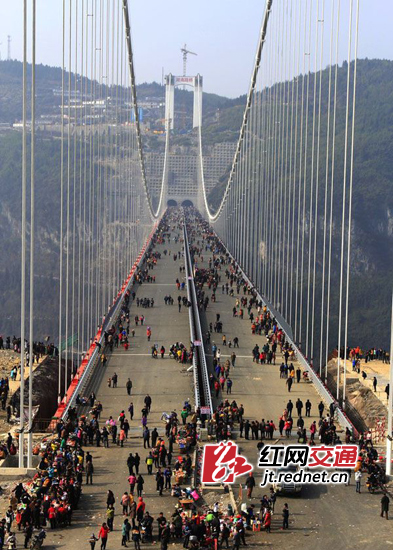


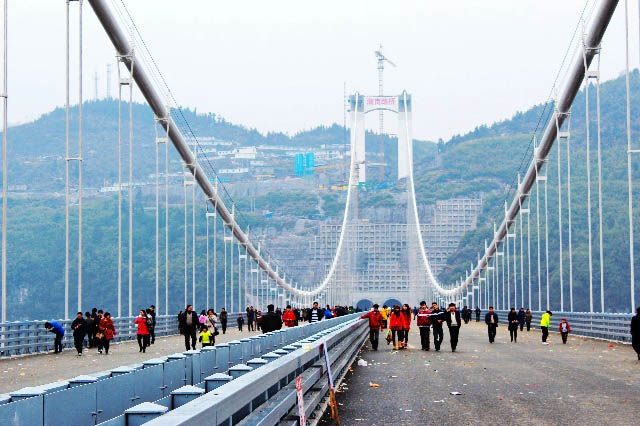




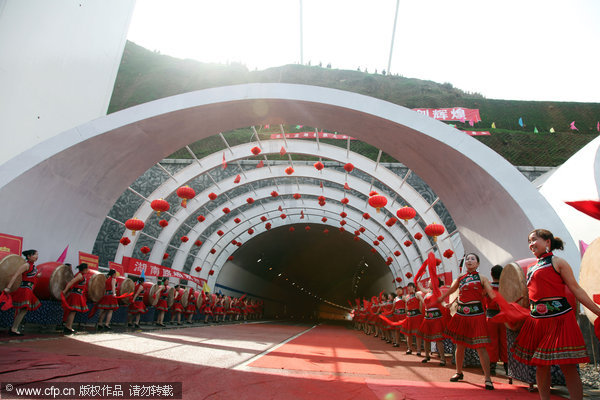

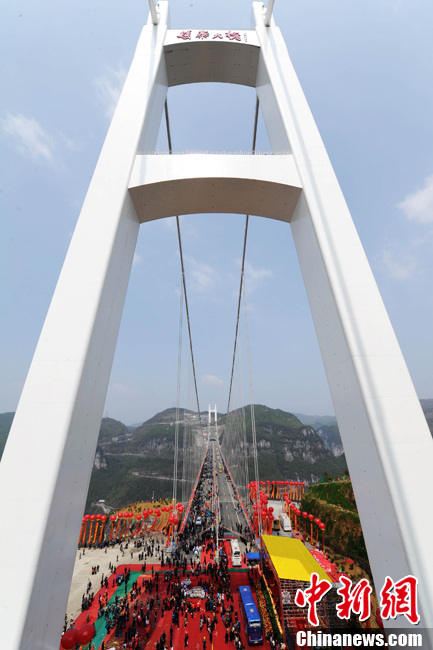
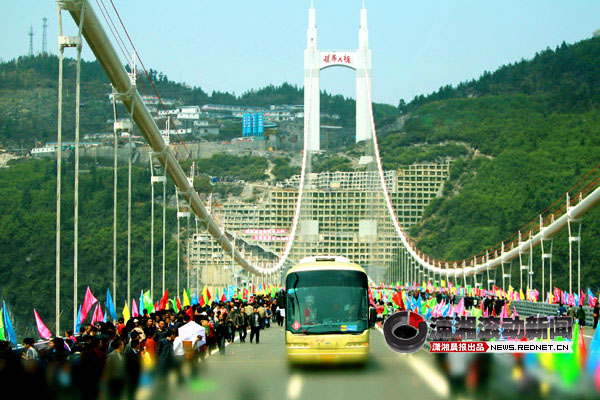




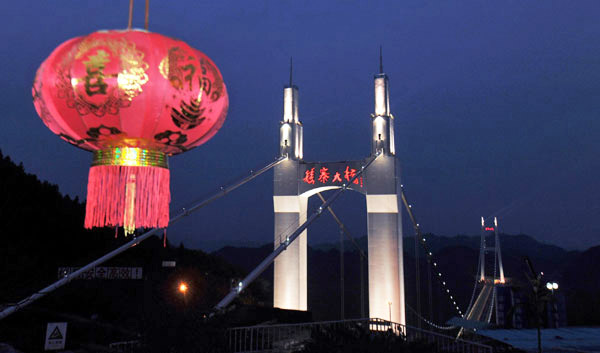
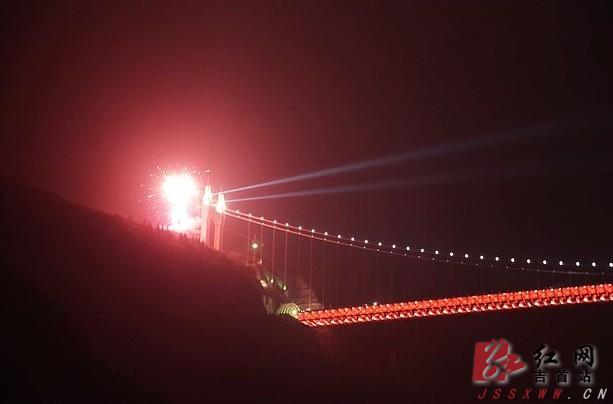


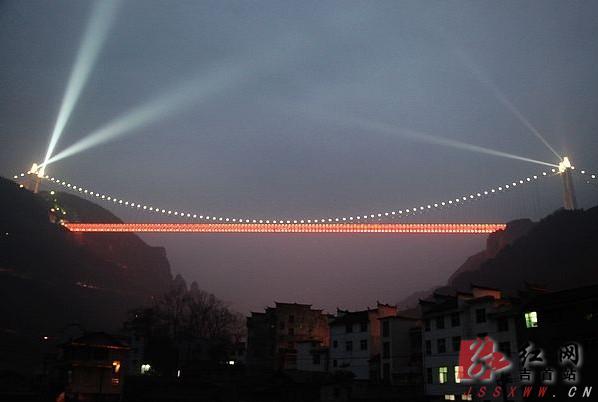










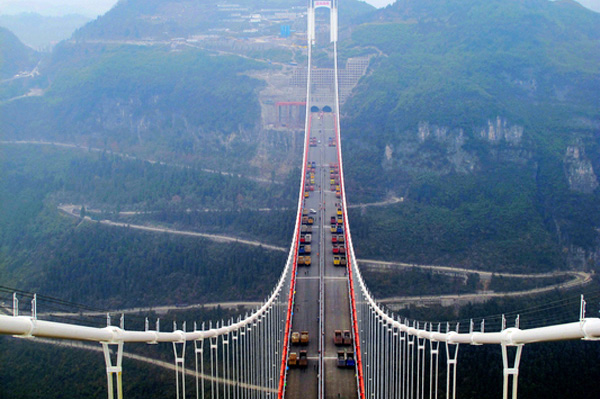
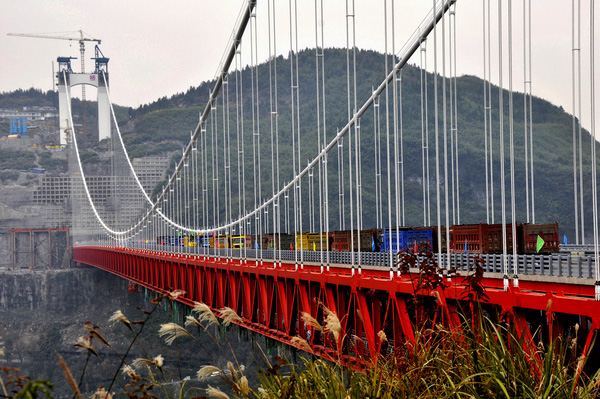


















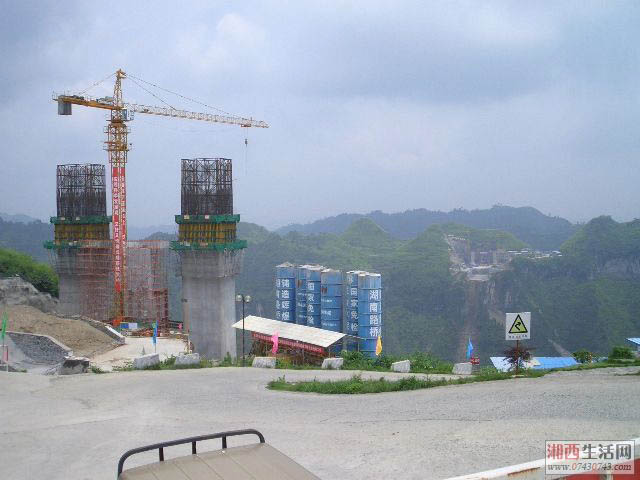




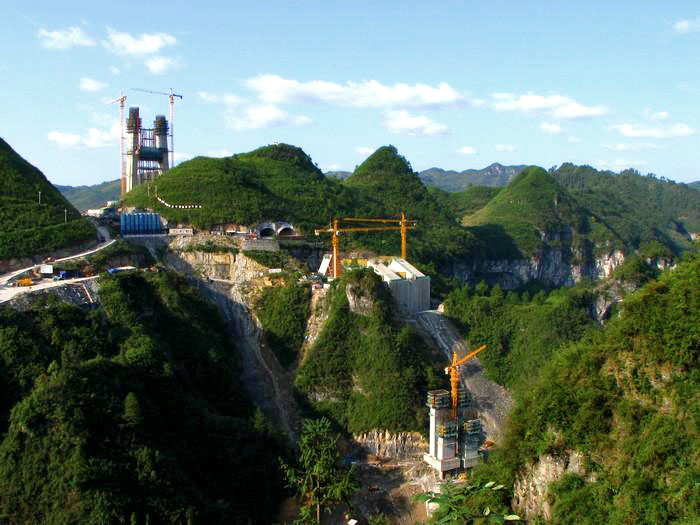


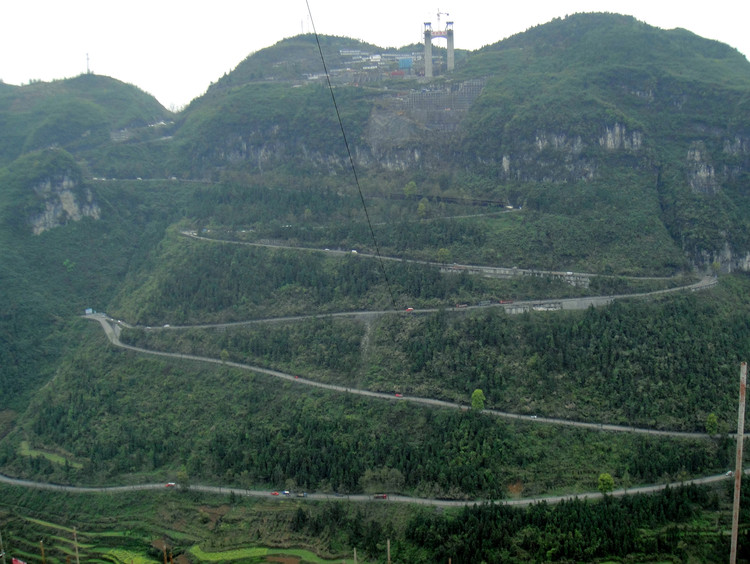

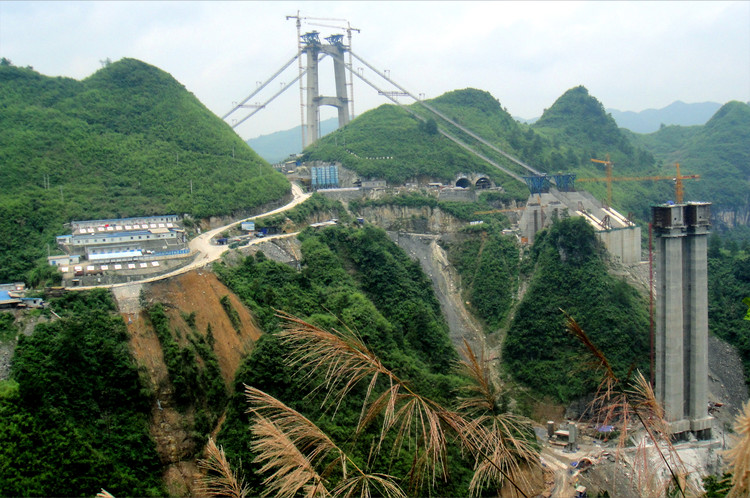
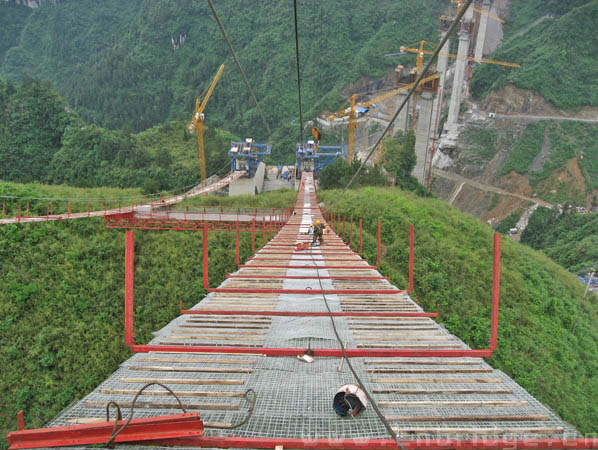

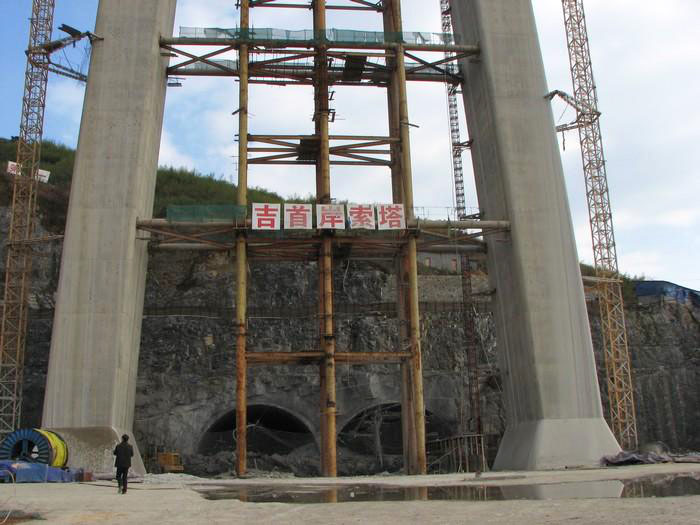







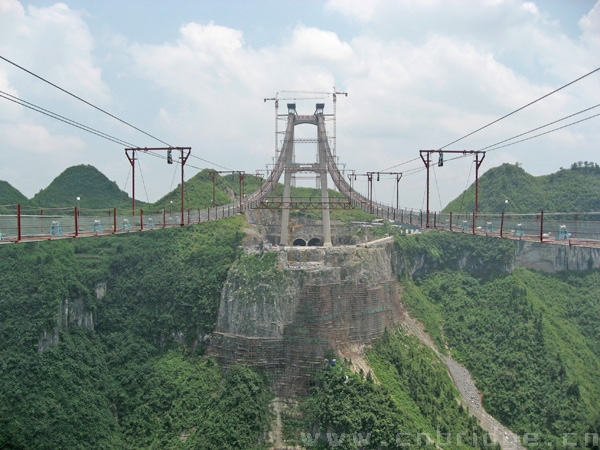
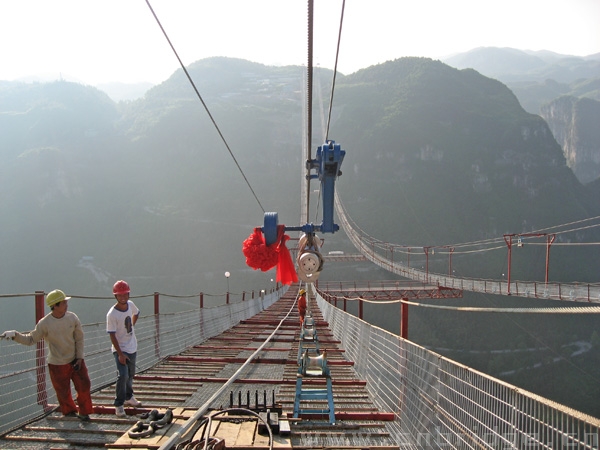

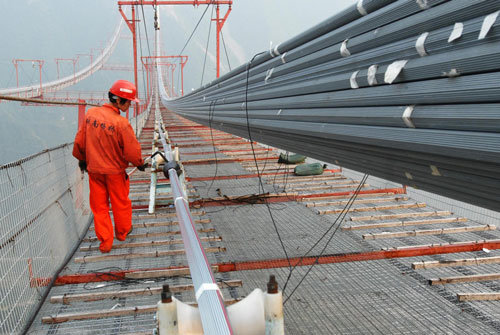
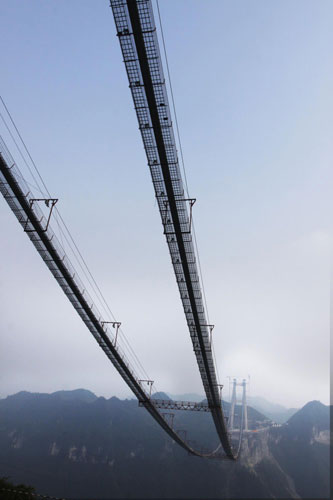
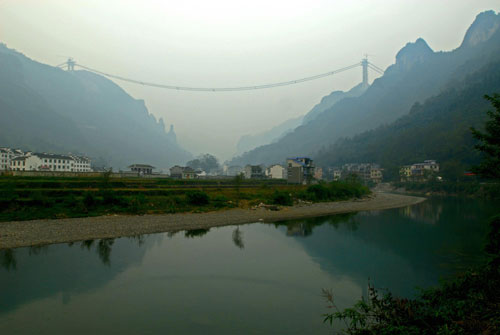

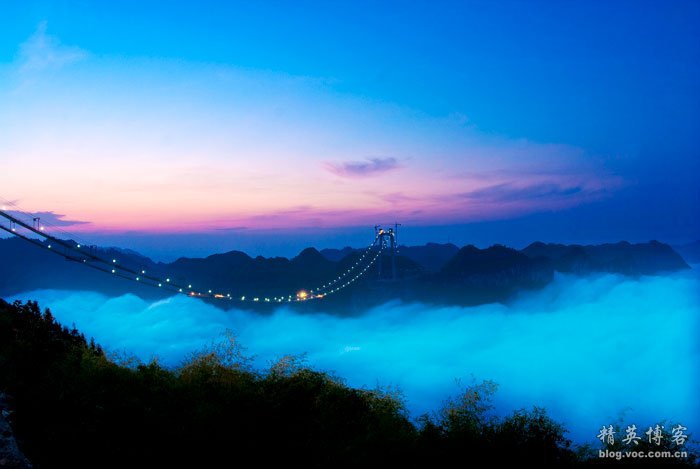

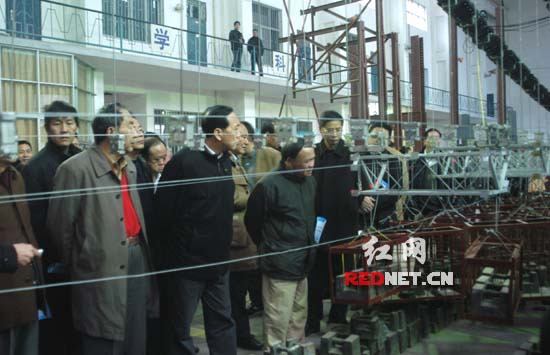

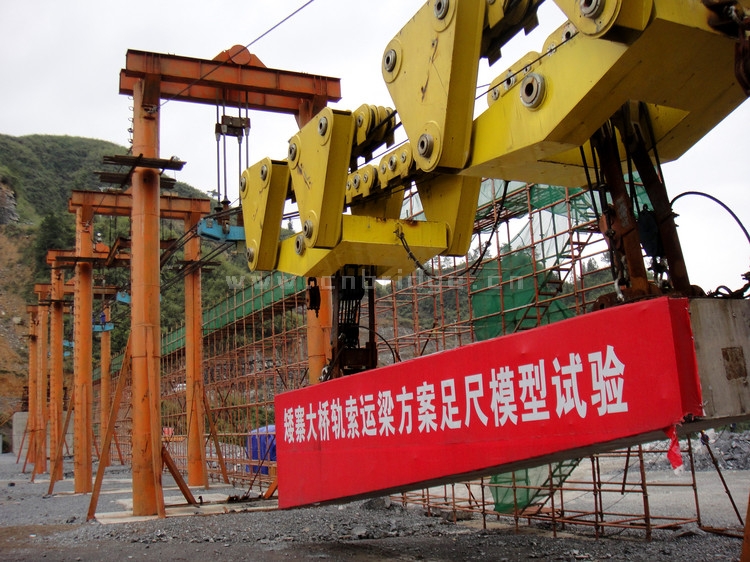





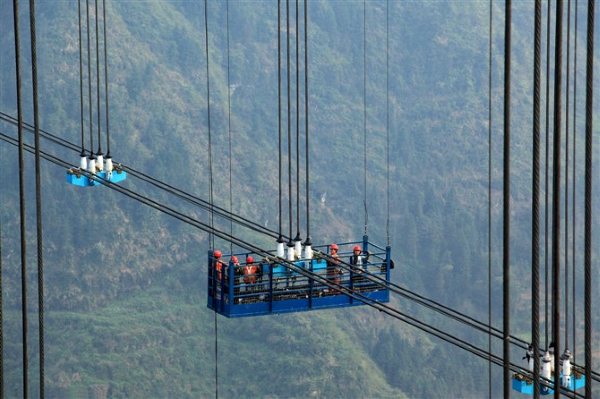

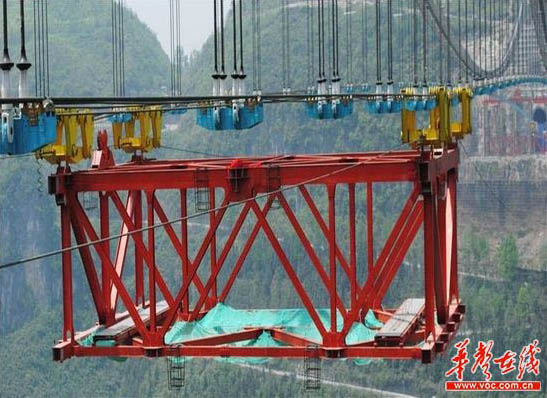






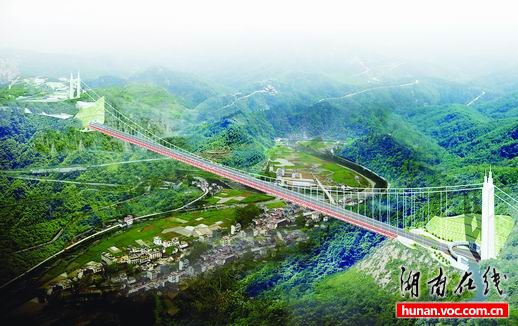
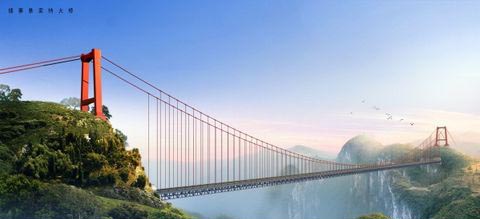



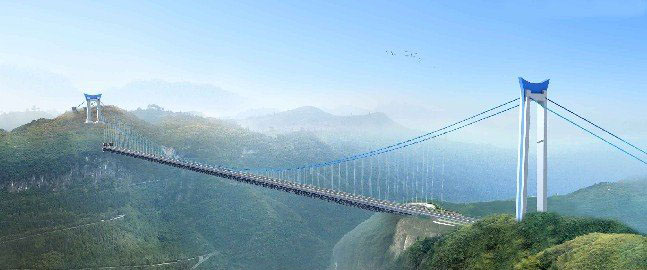








No comments:
Post a Comment